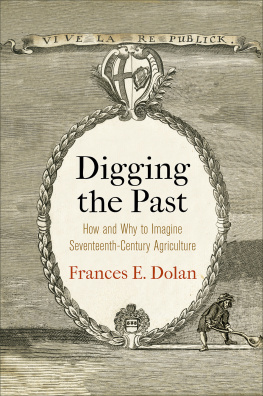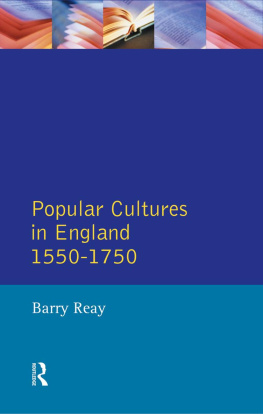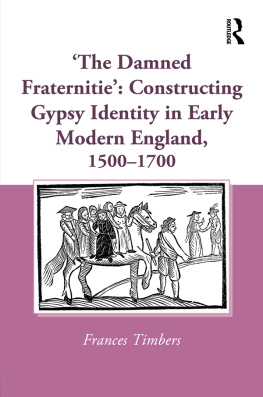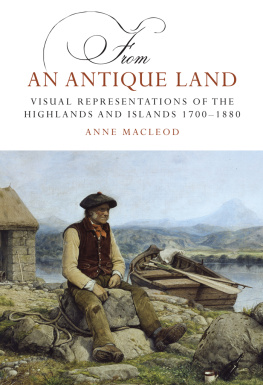ACKNOWLEDGMENTS
I could not have imagined and written this book without the support of two communities: the Miami University Department of English and the Newberry Library. Miami funded research and writing with a Summer Research Appointment and an Assigned Research Appointment; a Monticello College Foundation Fellowship at the Newberry also provided vital time and resources. As votes of confidence in the project at an early stage, these awards meant far more than the hours and dollars they put at my disposal. I have also benefited from the company and conversation of colleagues in both communities. Barry Chabot, Eric Goodman, Britton J. Harwood, Frank Jordan, Susan Morgan, Kerry Powell, John Romano, and James Sosnoski encouraged my development as a teacher and scholar. At the Newberry Library, which excels at fostering rigorous, congenial exchange, Dympna Callaghan, Rosemary Kegl, Peggy McCracken, Julie Solomon, and Jane Tylus all offered advice and friendship.
I was first won over to sixteenth- and seventeenth-century literature by Suzanne Gossetts eager, responsive, stria instruction. She helped me to explore an expanded range of possibilities. I have received many gifts from Mary Beth Rose, in many contexts. She helped me become a professional by treating me as one from the beginning; my work has been inspired by our conversations and by the model of her scholarship. I was also fortunate in my teachers at the University of Chicago, David Bevington, Janel Mueller, and Richard Strier. These mentors have never encouraged me to imitate them and have always engaged in the demanding task of helping me to find my own voice.
Writing this book has been a particularly interactive processin person, through the mail, and over the phone. I am most grateful to those who read and critiqued the whole manuscript: Susan Amussen, Mary Jean Corbett, Jean Howard, and Janel Mueller; each of them helped me to define and realize the project. Margot Finn, Cynthia Herrup, Constance Jordan, Carole Levin, Phyllis Mack, Lynn Voskuil, and Joy Wiltenburg also offered comments on various chapters. Scott C. Shershow not only read drafts but talked me through the revision process with seemingly endless patience, interest, and good cheer. I am also grateful to Sharon Achinstein, Susan Amussen, Mark Thornton Burnett, Dympna Callaghan, Mitchell Greenberg, Cynthia Herrup, Jane Kamensky, Gail Paster, Julie A. Sikkink, Julie R. Solomon, Deborah Symonds, Betty Travitsky, Frank Whigham, and Deborah Willis for sharing unpublished work with me. The staffs of the British, Folger, and Newberry libraries graciously assisted me. Closer to home, William Wortman and Teresa Lyle made me think that anything was possible. I am grateful to my editor, Bernhard Kendler, for supporting the project and to Lesley Beneke for her careful copy editing.
I thank the Yale Journal of Law and the Humanities for permission to reprint a revised version of Home-rebels and House-traitors: Murderous Wives in Early Modern England, 4.1 (1992): 131, and Shakespeare Quarterly for permission to reprint a revised version of The Subordinate(s) Plot: Petty Treason and the Forms of Domestic Rebellion, 43.3 (1992):31740. Following standard practice, I have retained original orthography in quoting from primary texts or facsimile editions, except for silently modernizing i, j, u, and v.
My mother, father, and sisters, relieved that there are no chapters on the murder of parents or siblings, have supported what my father calls the killer women project, as they have supported all my endeavors. My brother, who encouraged the early interests that led me to the book and inquired into every detail of my research, did not live to see the project finished. I dedicate it to him in meager recompense for all he did to help me out into the world. I also dedicate the book to the two women whose friendship I depend on daily. With Robyn Muncy, I have redefined what home means: Robyn on the other end of the phone. Gifted at ignoring my limitations, Robyn always makes me feel inexhaustible and hopeful. Although Mary Jean Corbett does not suffer praise gladly, shell just have to accept that she is the ne plus ultra of colleagues and neighbors. Finally, I thank the people who have made homes for me as I have written this book, despite my alarming habit of talking about domestic crime over dinner. Laurie Maguire, Lynn Voskuil, Doug Patton, and John Johnson have all reminded me that domesticity has pleasures as well as perils; Scott Shershow shared with me the wonders of the domestic resurrection circus.
FRANCES E. DOLAN
Cincinnati, Ohio
INTRODUCTION
In early modern England, as now, the home could function as a locus of conflict, an arena in which the most fundamental ideas about social order, identity, and intimacy were contested. Although the contests took many forms, they emerged into public scrutiny and intervention most dramatically when they erupted into violence. I focus here on the most extreme, violent instances of domestic conflict. Early modern English culture recognized nonmurderous domestic violence, for example, wife- and child-beating, sexual abuse, and verbal abuse, as a problem that local communities might address in ecclesiastical courts or through informal interventions, including shaming rituals. Common law, however, did not define these kinds of violence as criminal, and popular culture rarely represented actual instances of domestic violence that had no clear legal status, that is, those that did not lead to death. I look at those forms of domestic violence that occurred least often, but attracted most attention, and that the culture defined as felonies: acts of murder (petty treason, wife murder, infanticide) and of witchcraft.
Although there were other possible kinds of domestic murder, such as the killing of a parent or sibling, the law did not mark these out for special attention. In contrast, legal statutes explicitly define the killing of a husband, master, or newborn, or the causing of harm through witchcraft as capital offenses. Statutes may locate sources of disorder differently than do other legal documents, such as court records; they also do not necessarily correspond to how local judges and juries actually defined and prosecuted crimes. Yet statutes, by codifying the ruling elites dominant ideology and by regulating the conduct of all the realms subjects, demonstrate how legal fictions pervade a culture, shaping as well as articulating its conceptions of order and disorder.
The domestic crimes that attracted the most legal attention also generated the most extensive representations in a range of popular texts that began to proliferate in the late sixteenth century and became increasingly varied and numerous in the course of the seventeenth century. Constantly changing, coalescing, and diverging in form, these included pamphlets (ranging, roughly, from two to twenty-five pages), ballads, and plays based on actual crimes as well as published trial transcripts, scaffold speeches, and confessions. Some historians who have compared such texts to assize indictments and other legal records have found them accurate; they have also depended on these sources for evidence about the legal process that would not otherwise be available. Generally, however, even those scholars who attend to ephemeral popular materials relegate them to the margins, where they add color to the real evidence (legal records) or lay the groundwork for the real literature (the novel).






